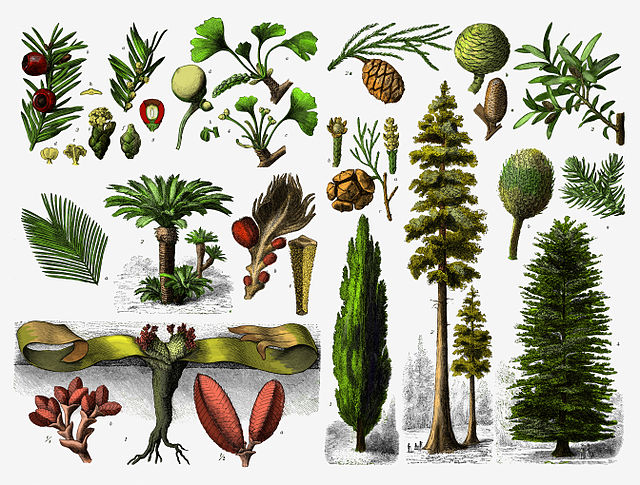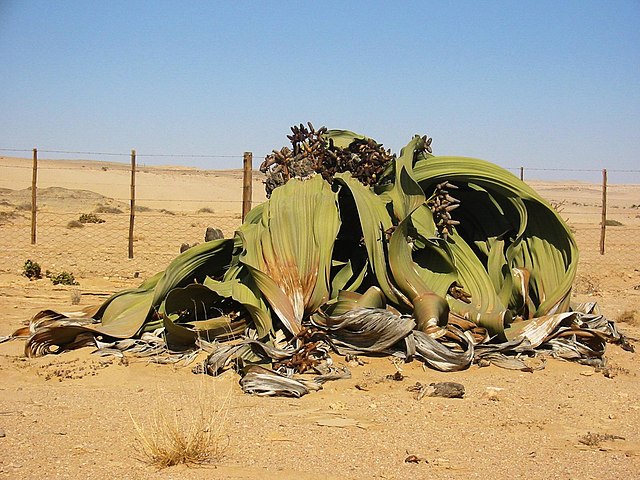Welwitschia is a monotypic genus of gymnosperm, the sole described species being the distinctive Welwitschia mirabilis, endemic to the Namib desert within Namibia and Angola. Welwitschia is the only living genus of the family Welwitschiaceae and order Welwitschiales in the division Gnetophyta, and is one of three living genera in Gnetophyta, alongside Gnetum and Ephedra. Informal sources commonly refer to the plant as a "living fossil".
Welwitschia
Female cones, from Curtis's Botanical Magazine (1863)
A female plant
A female Welwitschia beginning to shed seeds
The gymnosperms are a group of seed-producing plants that includes conifers, cycads, Ginkgo, and gnetophytes, forming the clade Gymnospermae. The term gymnosperm comes from the composite word in Greek: γυμνόσπερμος, literally meaning 'naked seeds'. The name is based on the unenclosed condition of their seeds. The non-encased condition of their seeds contrasts with the seeds and ovules of flowering plants (angiosperms), which are enclosed within an ovary. Gymnosperm seeds develop either on the surface of scales or leaves, which are often modified to form cones, or on their own as in yew, Torreya, Ginkgo. Gymnosperm lifecycles involve alternation of generations. They have a dominant diploid sporophyte phase and a reduced haploid gametophyte phase which is dependent on the sporophytic phase. The term "gymnosperm" is often used in paleobotany to refer to all non-angiosperm seed plants. In that case, to specify the modern monophyletic group of gymnosperms, the term Acrogymnospermae is sometimes used.

Gymnosperm
Encephalartos sclavoi cone, about 30 cm long
Zamia integrifolia, a cycad native to Florida







